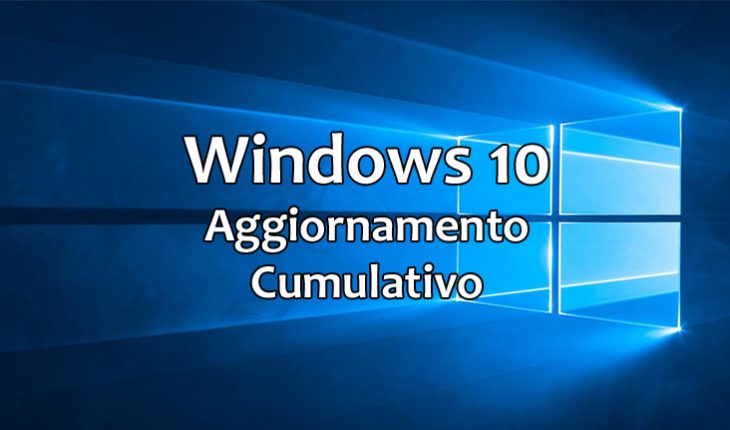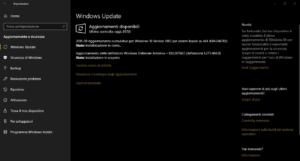Microsoft ha rilasciato un altro Aggiornamento Cumulativo di agosto 2018 per i PC e i tablet con Windows 10 oltre a quello distribuito lo scorso 14 agosto. Sui computer con Windows 10 v1803 (April 2018 Update) è identificato con il codice KB4346783 e una volta installato porta il sistema alla Build 17134.254.
Nota: i possessori del Surface Pro LTE riceveranno anche un firmware update (“Surface Mobile Broadband Update Device”) che va migliorare la stabilità delle connessioni LTE con e-SIM.
Sulle altre versioni di Windows 10 viene invece identificato come riportato di seguito:
- Fall Creators Update (v1709): KB4343893 – Build 16299.637
- Creators Update (v1703): KB4343889 – Build 15063.1292
- Anniversary Update (v1607): KB4343884 – Build 14393.2457
Di seguito l’elenco ufficiale delle migliorie e dei fix alla sicurezza portati dall’update su Windows 10 v1803:
- Addresses an issue in Microsoft Foundation Class applications that may cause applications to flicker.
- Addresses an issue where touch and mouse events were handled differently in Windows Presentation Foundation (WPF) applications that have a transparent overlay window.
- Addresses a reliability issue in applications that have extensive window nesting.
- Addresses an issue in the Universal CRT that sometimes causes the AMD64 FMOD to return an incorrect result when given very large inputs.
- Addresses an issue in the Universal CRT that causes the _get_pgmptr() function to return an empty string.
- Addresses an issue in the Universal CRT that causes isprint() to return TRUE for a tab when using the C locale.
- Addresses an issue where Microsoft Edge or other UWP applications can’t perform client authentication when the private key is stored on a TPM 2.0 device.
- Addresses an issue that causes computer certificate enrollment or renewal to fail with an “Access denied” error after installing the April 2018 update. This issue occurs when the registry process has a lower process ID (PID) than all other processes except SYSTEM.
- Addresses an issue that, in some cases, failed to clear decrypted data from memory after a CAPI decryption operation was completed.
- Addresses an issue that prevented the Device Guard PackageInspector.exe application from including all the files needed for an application to run correctly once the Code Integrity policy was completed.
- Addresses an issue where not all network printers are connected after a user signs in. The HKEY_USERS\User\Printers\Connections key shows the correct network printers for the affected user; however, the missing list for network printers from this registry key isn’t populated in any app, including Microsoft Notepad, or in Devices and Printers. Printers may disappear or stop functioning.
- Addresses an issue that prevents printing on a 64-bit OS when 32-bit applications impersonate other users (typically by calling LogonUser). This issue occurs after installing monthly updates starting with KB4034681, released in August 2017. To resolve the issue for the affected applications, install this update, and then do one of the following: Use Microsoft Application Compatibility Toolkit to globally enable the Splwow64Compat App Compat Shim, Use the following registry setting, and then restart the 32-bit application: HKEY_LOCAL_MACHINE\System\CurrentControlSet\Control\Print Setting: Splwow64Compat – Type: DWORD – Value1: 1
- Addresses an issue that causes the Wi-Fi EAP-TTLS (CHAP) authentication to fail if a user saves credential information before authentication.
- Addresses an issue that causes devices that have 802.1x Extensible Authentication Protocol (EAP) enabled to randomly stop working with the stop code ”0xD1 DRIVER_IRQL_NOT_LESS_OR_EQUAL”. The issue occurs when the kernel memory pool becomes corrupted. Crashes will generally occur in nwifi.sys.
- Addresses an issue that may remove a Dynamic Host Configuration Protocol (DHCP) option from a reservation after changing the DHCP scope settings.
- Extends the Key Management Service (KMS) to support the upcoming Windows 10 client Enterprise LTSC and Windows Server editions. For more information, see KB4347075.
Se il vostro PC non ha già fatto da sé, potete scaricare ed installare questo update manualmente accedendo a Impostazioni, Aggiornamento e Sicurezza, e cliccando o toccando la voce “Verifica disponibilità aggiornamenti”. In alternativa potete scaricare l’installer da questa pagina web e procedere all’installazione manuale.
Ricordiamo che se desiderate confrontarvi con altri utenti su un differente argomento, il luogo migliore per farlo è questa sezione dedicata del nostro Nokioteca Forum.



Se non ci sono commenti allora va tutto alla perfezione….o sono rimasto solo io con il mio 950l??